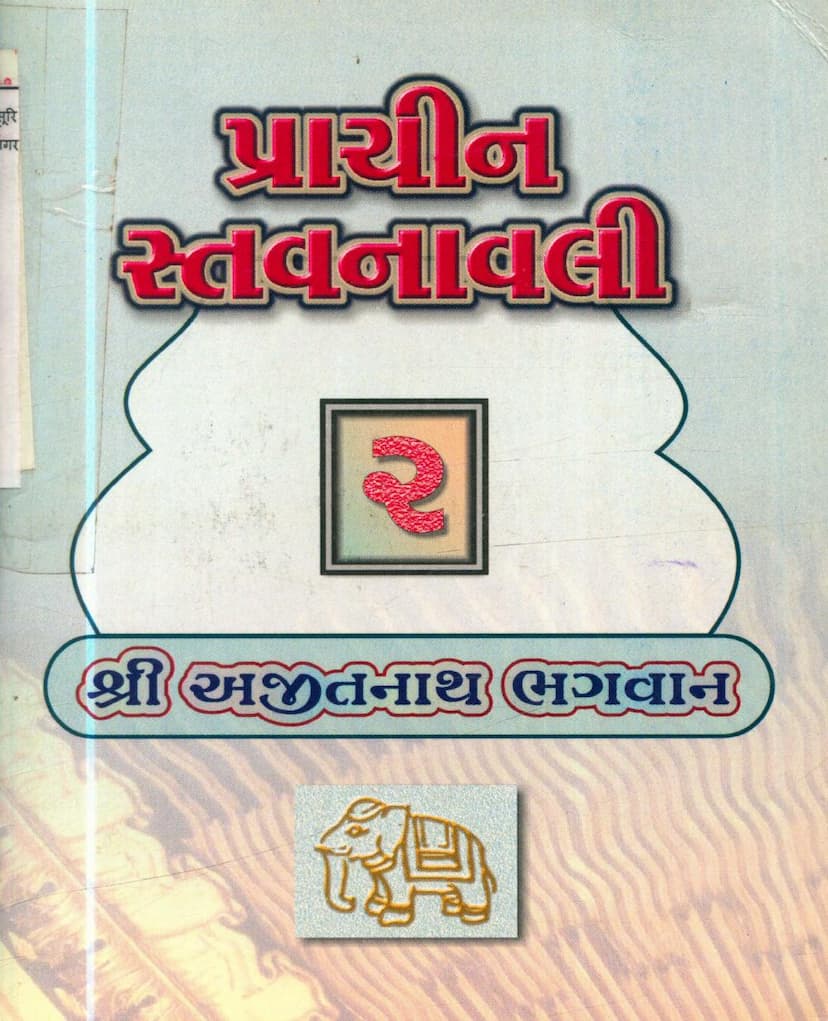Prachin Stavanavli 02 Ajitnath
Added to library: September 2, 2025

Summary
Here's a comprehensive summary of the Jain text "Prachin Stavanavli 02 Ajitnath" by Hasmukhbhai Chudgar, based on the provided pages:
This book is a compilation of "stavans" (devotional songs or hymns) dedicated to Lord Ajitnath, the second Tirthankar (ford-maker) in Jainism.
Core Themes and Content:
- Devotion to Lord Ajitnath: The central theme is the profound devotion and adoration of Lord Ajitnath. The "stavans" express the composers' deep spiritual connection, love, and longing for the Lord.
- Praise of the Namokar Mantra: Page 2 features a "stavans" that highlights the greatness and significance of the Namokar Mahamantra, describing it as the essence of the fourteen Purvas (ancient Jain scriptures) and possessing infinite meaning and power. It emphasizes chanting it in all circumstances and its ability to grant various spiritual powers and liberation.
- Life and Teachings of Lord Ajitnath: Several "stavans" (e.g., pages 15-16, 20-21, 22, 25, 27, 28, 30, 36, 41, 42, 44, 45, 47, 49, 50, 51, 52, 53, 54, 55, 57, 60, 62, 63, 64, 65, 66) recount key aspects of Lord Ajitnath's life:
- Birth: Born in Ayodhya to King Jitashatru and Queen Vijaya.
- Appearance: Described with a golden complexion, a height of 450 Dhanush (a unit of measurement), and a lifespan of 7.2 million Purva (years).
- Symbol: His emblem is the elephant.
- Ascension to Liberation (Moksha): Achieved liberation at Sametshikhar along with 1000 Rishis (monks).
- Key Life Events: His conception, birth, renunciation (diksha), austerity, attainment of omniscience (Kevalgyan), and liberation are mentioned.
- The Nature of Devotion: The book emphasizes that true devotion stems from a deep understanding of the divine (paramatma) rather than mere ritualistic repetition (gatanugatikta). It highlights that even a few tears shed in devotion can outweigh a lifetime of worldly sorrows.
- Spiritual Aspirations: The "stavans" express a yearning for spiritual upliftment, overcoming worldly attachments, conquering inner enemies (like lust, anger, ego), attaining divine knowledge, and ultimately achieving liberation (moksha).
- Compilation and Authorship: The book is a collection of "stavans" authored by various renowned Jain scholars and saints from different traditions (Gachhas). The preface acknowledges the contribution of these past spiritual masters in the field of devotional literature.
- Structure and Organization: The book is organized with a preliminary section that may include introductory verses or philosophical insights, followed by the "stavans" themselves, each attributed to its composer. The latter part of the book (starting from page 9) seems to detail Jain rituals like "Chetyavandan" (worship of idols) and the associated sutras (chants), along with more "stavans" and "thoy" (short prayers or acknowledgments).
- Inclusion of Rituals: Pages 9-14 provide detailed instructions and verses for Jain rituals like "Irryavahiy," "Kaushagg" (meditation), and "Chetyavandan," explaining their meaning and purpose. This suggests the book is also a practical guide for devotional practice.
- Philosophical Underpinnings: The "stavans" touch upon concepts like the soul's journey, karma, the nature of the soul, the path to liberation, and the importance of spiritual guidance (from gurus).
Key Features Highlighted:
- Variety of Composers: The extensive list of composers indicates a rich tradition of Jain devotional poetry and a wide range of devotional expressions.
- Poetic Styles and Melodies: The notes on "deshi" (local) tunes suggest that these "stavans" were meant to be sung in various traditional melodies, enhancing their devotional appeal.
- Emphasis on Inner Experience: Many "stavans" focus on the internal spiritual experience, the longing of the soul, and the transformation that occurs through devotion.
Overall Purpose:
The "Prachin Stavanavli 02 Ajitnath" serves as a repository of ancient Jain devotional songs, aimed at inspiring spiritual devotion, fostering a deeper understanding of Lord Ajitnath and Jain philosophy, and guiding practitioners in their devotional and ritualistic practices. It aims to help individuals achieve spiritual purity and ultimately attain liberation through unwavering devotion.